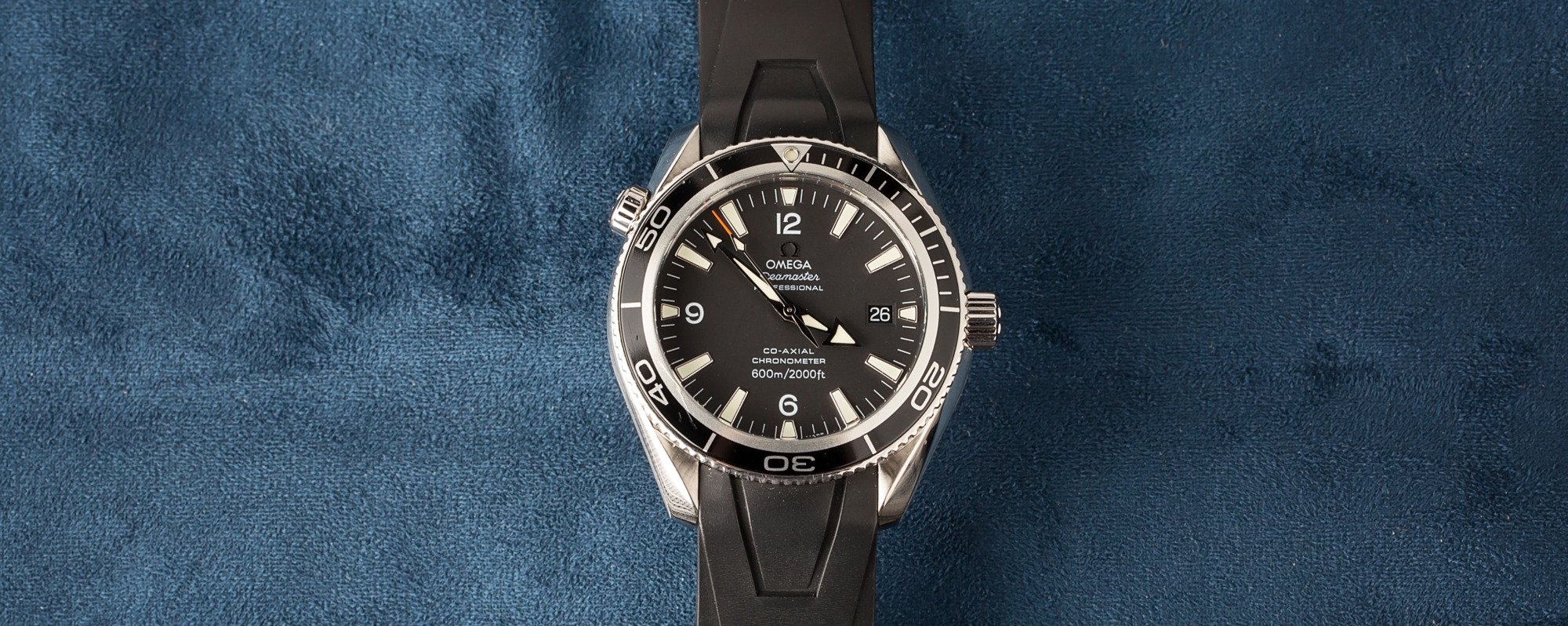For over 100 years, Omega’s timeless watch collections have been gracing the wrists of discerning wearers who appreciate fine Swiss watchmaking. This premium brand offers not only meticulously crafted timepieces but also a diverse range of bracelets and straps with which to customize one’s Omega. Their innovative interchangeable bracelet system makes it easy for collectors to tailor their Omega aesthetic to any personal taste or situation.
While Omega established its reputation using quality leather straps, by the mid-20th century stainless steel metal bracelets increased in prominence. Today, Omega produces bracelets from steel, gold, titanium, and more which exude luxury and precision. Leather continues to have relevance with elegant options including calfskin, alligator, and rare cordovan leather. For sporty models, the Technopolymer rubber compound delivers extreme durability and flexibility demanded by divers and athletes. And high-tech fabrics like nylon have their place for those favoring a lightweight, casual option.
Each Omega bracelet and strap type has its own merits based on material traits, quality of construction, and intended wearing occasions. As we explore the offerings across metal, leather, and contemporary fabrics, the discerning buyer is empowered to evaluate their choices to land on that perfect personalized fit for their cherished Omega watch.
Metal Bracelets
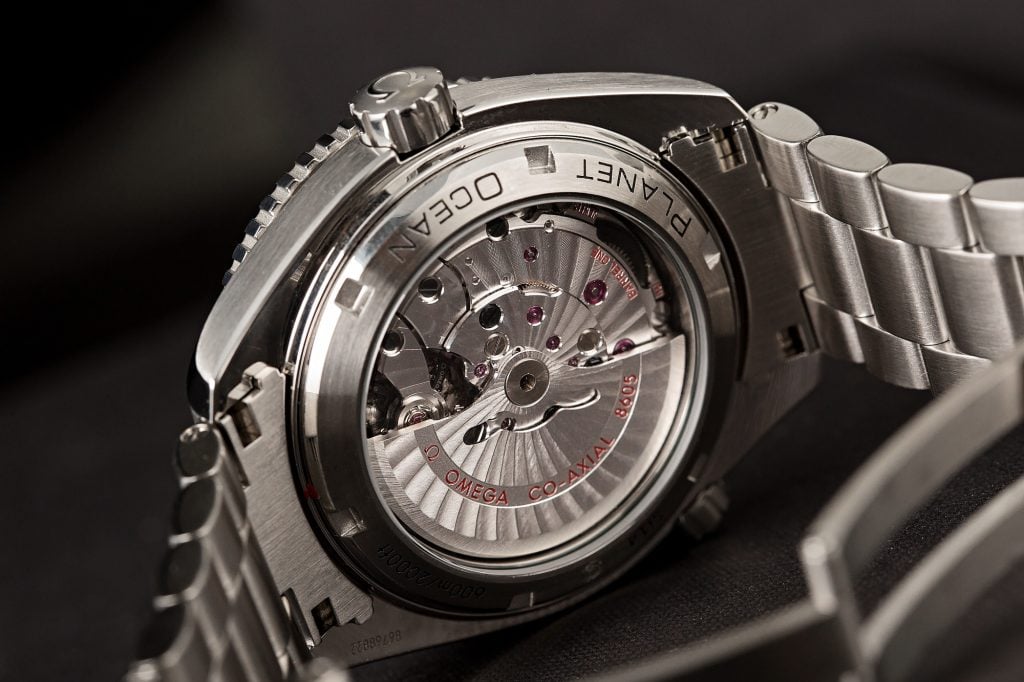
Of all the bracelet types seen across Omega’s watch collections, fine-crafted metal designs command attention for their integration with the watch case itself as an ultimate emblem of luxury and performance. Metal bracelets showcase the brand’s exemplary machining techniques through precision finishing of links made from steel, gold, or titanium.
The three-piece 1171 bracelet with polished center links and brushed outer links first gained notice on the Omega Speedmaster. This Oyster-style design provides contrast and reflectivity with perceived substance underscoring quality construction. Some of the dressier Omega watch models mentioned in our guide such as the De Ville Prestige, the 1503 bracelet features rounded links for a more fluid integrated look. Omega De Ville models often incorporate lustrous 18k gold central links surrounding the case. At the apex resides the proprietary 1957 bracelet reserved for the Omega Seamaster watch model. Its alternating brushed and polished five-piece links deliver a light-catching sparkle.
Beyond link patterns, Omega offers unique metal bracelet styles that make a bold statement. Some Omega Constellation models feature a fully integrated 6908 bracelet milled directly into the watch case metal. This uniform look offers a forceful wrist presence. And for larger Omega Seamaster Planet Ocean diver models, the massive rigid 2917 bracelet feels like an extension of the rugged watch itself.
While exuding sophistication, Omega’s metal bracelets warrant some considerations. Comfort factors in for all-day wearability, with loose link tolerances and smart extensions that tailor fit. Water resistance demands secure gaskets within pins and collars that can seize up over time without proper servicing. Naturally, Omega metal bracelets reside on the higher end of the price scale as well. But for those enamored by Omega’s mechanical mastery, having a Seamaster or De Ville attached by iconic polished and brushed links makes a decidedly profound statement.
Leather Watch Straps
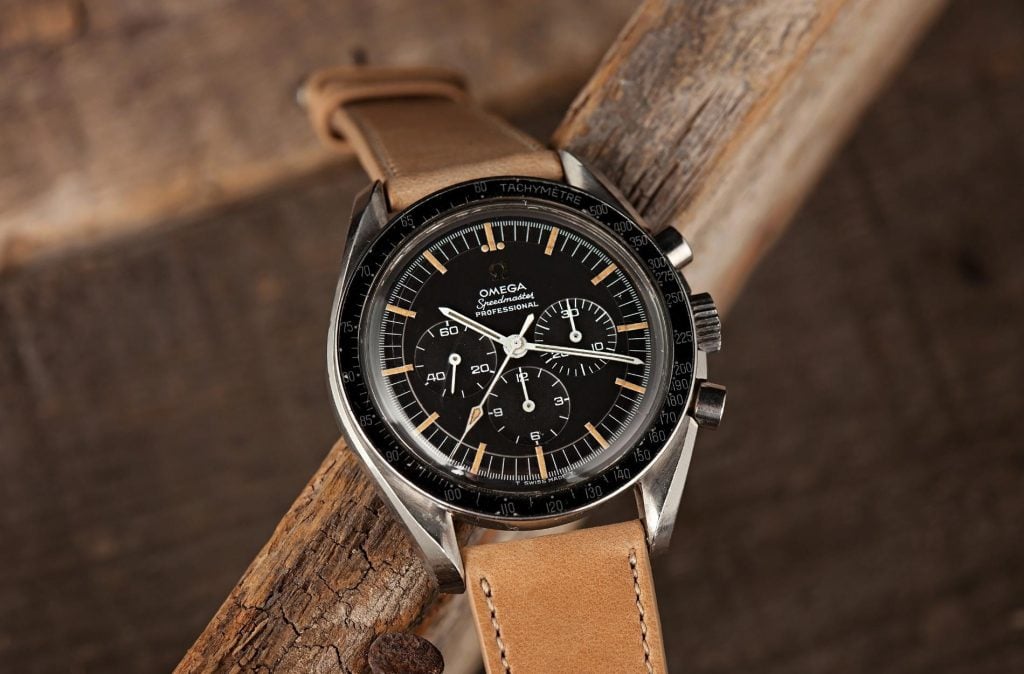
While indestructible metal prevails on many Omega sports models, discerning collectors often gravitate to leather watch straps that exude old-world charm and luxury craftsmanship. Omega sources extremely high-grade leather materials for their straps that balance beauty with durability.
Calfskin, revered for its dense fine grain, makes a frequent appearance across Omega’s dressier models like the De Ville Prestige. Skillful stitching in a contrasting color scheme nicely offsets the watch face for a sophisticated style statement. Punching the holes and expertly stitching the leather together by hand or specialized machinery is an intricate process Omega has perfected. Only strict quality control ensures near-perfect clean uniform spacing between each cross-thread.
Beyond calf, Omega also sources more exotic materials like alligator leather, taking advantage of the distinctive square scale patterning and texture. Alligator hide is exceptionally tough and ages beautifully over time as oils rise to the surface. This natural patina and luster elevate desirability the longer it is worn. Yet even finer still is cordovan leather sourced from horse hide rather than bovine. Its natural elasticity, rich color, and smooth grain markings make cordovan leather one of the most coveted and rare across watchmaking. Omega often saves cordovan for extremely limited edition collab models which fetch a high price among collectors.
To match such premier leather materials, Omega lavishes attention to detail on strap finishing and hardware. Edges are neatly trimmed and burnished for seamless comfort across the wrist. Custom engraved buckles on the closure tang add personalized flair. And where the straps meet the lugs, curved ends integrate fluidly while resisting moisture ingress. For timepieces starting at five figures, customer satisfaction depends greatly on the leather straps conveying lasting luxury commensurate to the Swiss mechanical calibers inside.
With quality also comes proper care however to uphold the visual appeal of Omega’s leather over decades of ownership. Periodic conditioning with high-end leather cream or wax nourishes the material to resist cracks and retain suppleness on the wrist. With regular maintenance combined with avoiding direct moisture, buyers can enjoy how an Omega leather strap develops its own character, the very definition of old-world patinated charm. For those seeking luxury aesthetics paired with peerless in-house movement pedigree, Omega leather straps deliver enduring and personalized appeal.
Rubber and Fabric Straps
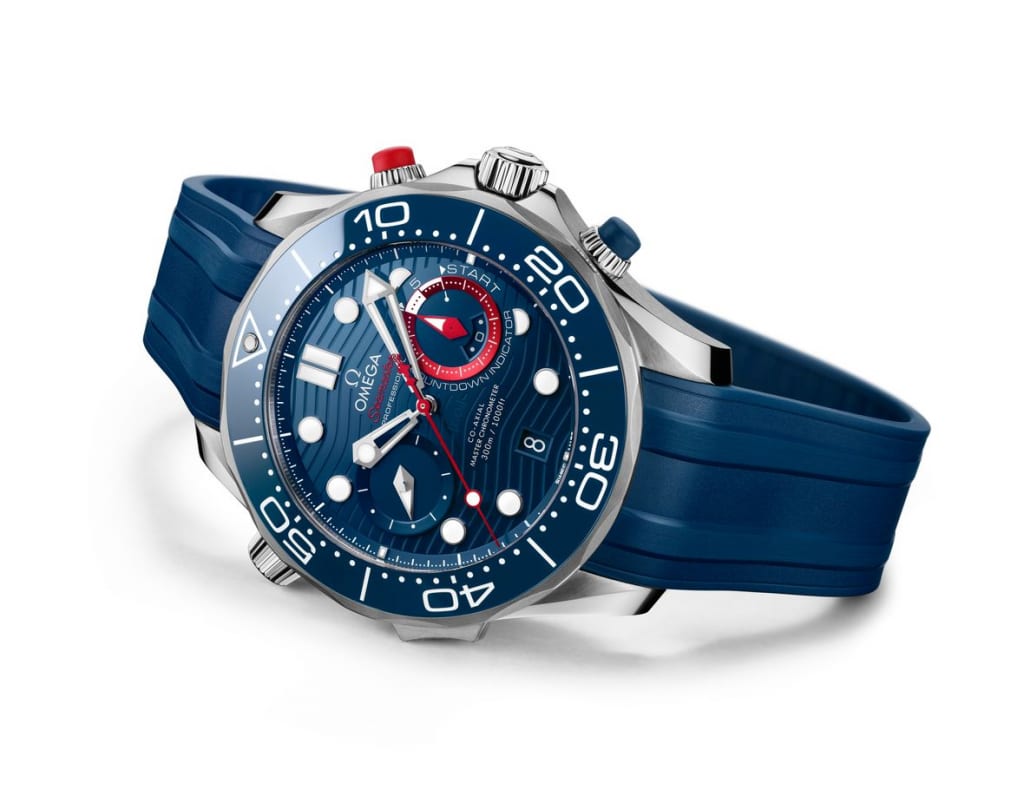
While metal and leather make up classic Omega bracelet materials, contemporary watchmaking also embraces technical rubber and woven fabrics for their sporting personality. Both rubber and fabric straps focus on flexibility, durability, and quick-drying practicality over ornamentation.
Silicone rubber prevailed in early sport watch models starting in the 1960s for its sheer versatility both in water and out. But Omega upgrades to proprietary compounds like Caoutchouc for their diving Seamaster lineup. This natural rubber derivative minimizes sensitivity to environmental factors. Athletic Omega models also frequently use injection-molded Thermoplastic Polyurethane (TPU). TPU outperforms silicone with extreme tear resistance, higher density for comfort, and UV fade prevention to maintain its vibrant coloration.
Beyond rubber, Omega capitalizes on lightweight yet rugged fabrics like ballistic nylon woven from durable synthetic fibers. Originally developed for military usage, ballistic nylon dries swiftly and withstands heavy abrasion without distortion. This makes it well-suited to Omega’s tool watch models built for vigorous activity. Other Omega Seamaster models mentioned in our guide may incorporate durable sailcloth canvas woven from weatherproof cotton or polyester blends.
Both rubber and fabric Omega straps emphasize user-friendliness. Pre-molded curves at the lugs provide seamless integration with the case while permitting on-the-fly adjustment. Compared to bracelets, straps simplify sizing with various eyelets. Care is straightforward – simply rinsing debris after heavy use without risk of corrosion.
Straps stand apart from fine metal bracelets with their sporting personality and robustness. An Omega Seamaster fitted with a colorful ballistic nylon strap makes a decidedly different statement than matching stainless steel. But variety and flexibility make straps a stylish complement accessible to more budgets. For Omega fans with an action-oriented lifestyle, rubber or fabric creates a lightweight wearing experience without sacrificing the brand’s signature quality and performance.
Finding the Right Balance: Bracelets vs. Straps
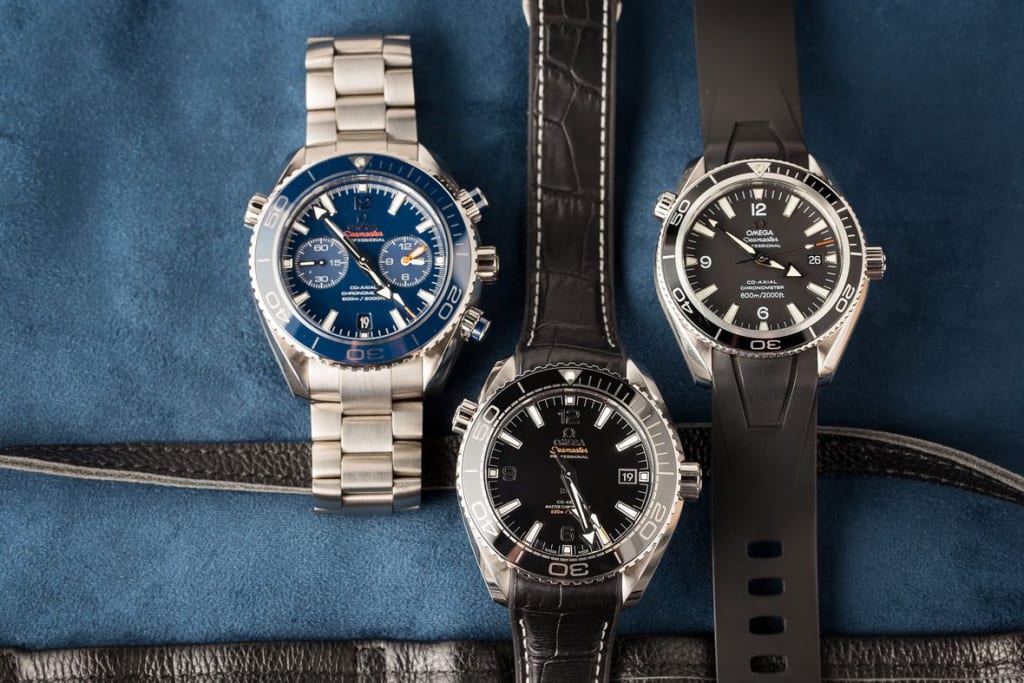
Beyond the intrinsic merits of various materials and constructions, Omega bracelets and straps each factor differently across considerations like cost, durability, style versatility, and wearing comfort that help guide the discerning buyer.
Metal bracelets reside toward the higher end of the investment scale, unsurprising given precise machining and use of semi-precious metals. Leather follows at a step below; exotic alligator or cordovan commands a premium, while calfskin presents a more affordable luxury. Fabric and rubber straps usually cap off the range as an accessible option.
For durability, metal links and rugged fabric score highest from a material integrity standpoint. Though with proper preventative maintenance, fine leather can serve equally well over decades. Rubber lasts though tends to fade and tear sooner from environmental exposure.
In blending with lifestyle, watch straps unlock style versatility. Swapping a steel bracelet out for leather or nylon transforms the formality of a watch entirely. Only straps afford this flexibility to match to occasion. Formal events warrant pristine metal.
And all-day wearing comfort favors the give of supple fitted leathers or flexible woven fabrics versus metal links that weigh heavier. Modern micro-adjustable bracelet clasps aid ergonomics considerably.
Ultimately with the incredible diversity Omega offers in bracelets and straps, the owner has the freedom to reimagine their timepiece at a whim. Like fine jewelry, watches convey personal style. So, whether matching the boardroom, yacht or hiking trail, Omegas’ combinations of exquisite movements with straps and bracelets for every taste empower aficionados to fully make their watch their own.





